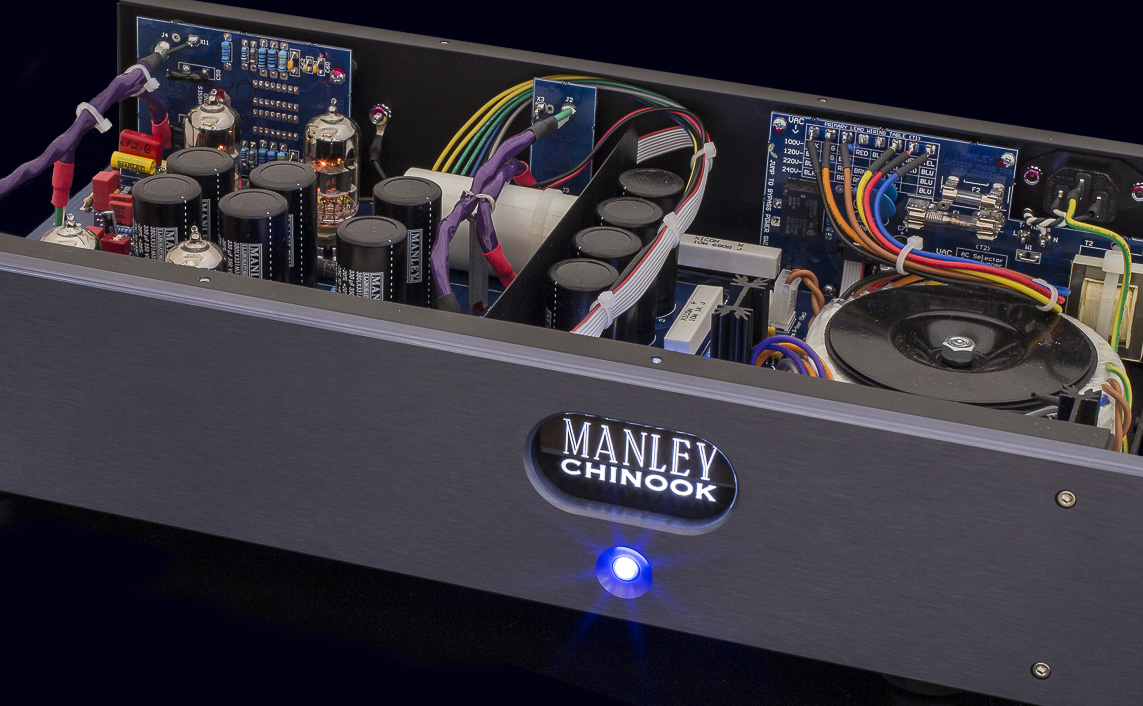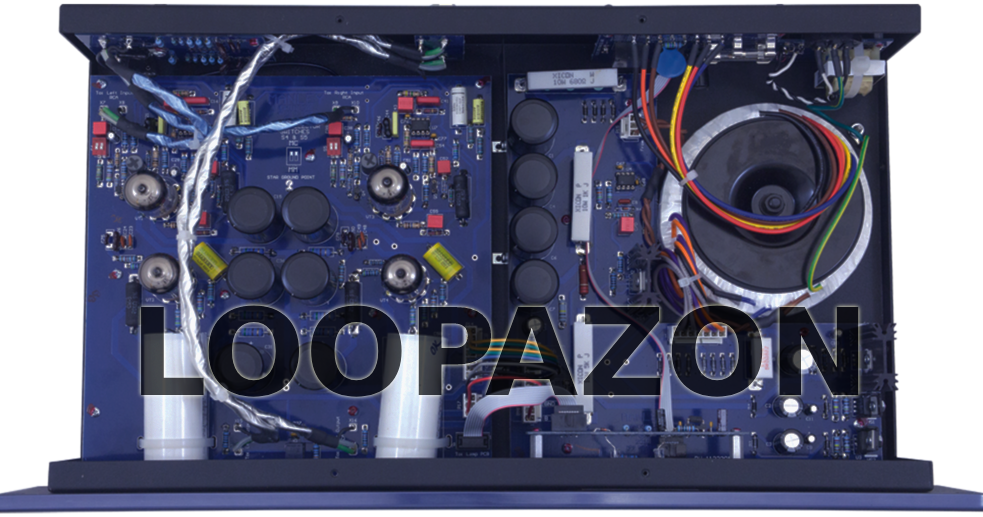Manley Chinook Phono Stage
Form a band online, promote your music, buy custom beats, sound parts, and share your Beat or Track as a Royalty Free loop with us. Collaborate to make beats online with the best loop makers from around the world on the Forum for musicians and beat makers. Keep up to date with Music News and learn from FL Studio Video Tutorials and the articles on the Blog. Free DAW Music Software downloads, VST and Instrument Packs for FL Studio, Pro Tools, Logic, Ableton, and how to use the most popular free DAW Software, Fruity Loop Plugins, MIDIs and more.

Manley
Chinook Phono Stage
In
2005, Manley Laboratories, a studio-tube-gear expert, designed a
triangular-shaped integrated tube amp with an iPod dock for the
consumer market and named it the Stingray iTube, in keeping with the
company's practice of naming most of its hi-fi consumer components
after marine animals. The Chinook delivers an accurate image and
replication of the originally recorded environment, as well as
excellent dynamics and a wide frequency range. The Chinook, which was
designed and produced in California, represents Manley's dedication
to our local community as well as a simple, clean, and quiet signal
way. The Chinook displays the superior linearity of vacuum tubes
while also providing the versatility required to accommodate any
turntable configuration.
Everything will be precisely and musically represented, from the most exotic 180-gram audiophile pressing to 25-cent thrift-store classics. The Chinook focuses on design elegance, meticulous execution, efficient manufacturing, and high quality. Throughout, audiophile-grade and time-proven components are employed, demonstrating Manley's commitment to seductive sonics mixed with the dependability that experts all around the globe rely on.
Features and the Applications
1. STANDBY POWER SWITCHING
The CHINOOK's front-panel power switch alternates between regular operation and a near-zero-power sleep mode. Except for certain keep-alive control logic powered by a separate tiny mains transformer in the power supply, no working voltages are present in sleep mode.
2. LOW / HIGH GAIN SWITCHING
The LOW/HIGH GAIN controls are found inside the machine. The gain may be modified from 45dB to 60dB by altering the internal DIP switch settings. Moving-magnet cartridges are typically set to 45dB, whereas moving-coil cartridges are set to 60dB. The CHINOOK is pre-configured at 45dB gain. Remove the main connector from the device before altering the internal gain. Remove the lid after waiting at least 15 minutes for the internal capacitors to drain if the CHINOOK was recently used. Hands should not be used to contact any portions of the board. Change the DIP switch settings with a tiny flat screwdriver. Each channel contains two switches in parallel for contact redundancy and contact integrity assurance. Each DIP switch pair must be set to the SAME value, and both channels must be set to the same GAIN value. Remember that for 60dB GAIN, all GAIN switches must be placed to the EDGE of the device, whereas for 45dB GAIN, all DIP switches must be set to the MIDDLE.
3. SELECTABLE CARTRIDGE LOAD IMPEDANCE AND CAPACITANCE
The CHINOOK comes with several different cartridge loading options. It comes with 45dB of internal gain and 47kOhm / 50pF of load pre-installed. For the majority of users, this is an excellent place to start.
4. SETTING THE LOADING SWITCHES
Self-capacitance in typical phono connection cables is on the order of 20–30 pF per foot. If the interconnect cable is 3 feet (1 meter) long, the interconnect cable alone might be responsible for 60-90 pF of input capacitance. Each cartridge manufacturer's product will perform optimally when terminated (loaded) with a specified quantity of resistance and capacitance in a laboratory setting. Start with the cartridge manufacturer's suggested values, minus the connecting cable capacitance. If the suggested cartridge load capacitance is unknown, an acceptable default value is 150 pF, which is the total of cable and termination capacitance switch values. This number represents a de-facto standard that pre-amp manufacturers have adopted in the past and today. After that, one can start experimenting with various switch settings until one discovers the ones that work best. The auditory effects of changing the termination capacitance might vary depending on the cartridge type and brand. Given the wide range of source impedance characteristics of today's cartridges, this is to be expected. In general, the termination capacitance value should affect delicate imaging and spatial cues on the one hand and high-frequency content, forwardness, and speed of the replayed sound on the other.
5. HIGH-PERFORMANCE FRONT END
During the last half-century, the CHINOOK preamplifier makes the most of passive component selection and active circuit advancements. Without unduly complicated circuitry, the hybrid cascode gain blocks give wide-band high-gain, low noise, and low distortion performance. Even though the local negative feedback employed in each block is relatively minimal, the multiplicative aspect of the cascode device's output (anode) impedance ensures that the most significant attributes of each gain stage are retained. This method renders each stage's amplification factor indifferent to tube gain changes caused by device tolerance allowances or aging. In addition, the input stage is automatically biassed by a precision servo network to compensate for device variations and component tolerances. Other design features include high quiescent operating currents in each gain stage. The system bandwidth increases while the static and dynamic impedances in each stage are reduced. This is done to ensure enough headroom for the most dramatic musical performances and high-quality pressings.

6. ACCURATE "4-CORNER" RIAA EQUALIZATION
In the spirit of high fidelity, all 4 RIAA phono equalization corner frequencies or time constants have been explicitly handled in the CHINOOK preamplifier. The big 3 time constants of 3180, 318, and 75 microsec have historically been the focus of most designs. This ignores the fourth corner of around 3.2 us, which causes most phono stages to keep rolling off the highest octave impulses arriving from the phono pickup instead of turning the last corner and shelving to flat response at roughly 50 kHz when ignored. When developing inverse compensation networks, as with other equalizing amplifiers intended to rectify a frequency-selective emphasis curve, care must be taken.
If the objective is to create a very accurate passive network with low-feedback amplifiers, then one must be cautious. According to experience, the work expended in adhering to the inverse RIAA equalization curve delivers benefits that readily justify the higher procurement and manufacturing expenses. The RIAA equalization network uses only hand-selected and/or 1 percent tolerance components to achieve this. This results in a perfect phase and gain matching between channels. In a nutshell, the CHINOOK will bring out the variances in the character and individuality of your vinyl record collection, cartridge, tonearm, and turntable.

SPECIFICATIONS
• Vacuum Tube Complement-6922 x 2 (gain stage) plus 6922 x2 (output stage). Any 6DJ8, 7308, ECC88 types can be utilised.
• Manley Teflon® and gold-plated RCA jacks provide unbalanced input and output connections.
• Automatic Mute Timer: The output jacks are muted for around 45 seconds when the computer is switched on.
• The automatic mute circuit allows tubes and circuitry to warm up and settle.
• The output jacks are muted as soon as the power is turned off.
• Input Termination Capacitance (MM/MC): 50pF, 100pF, and 200pF user-selectable capacitor values in three positions. 50, 100, 150, 200, 250, 300, & 350pF yield the resulting combinations.
• Moving Magnet (MM) Input Impedance is fixed to 47k Ohms
• Moving Coil (MC) Input Impedance: 5-position user-selectable values are 50, 100, 200, 400, 800 Ohms.This results in 32 different loading options.
• Gain: The internal DIP switches will allow you to choose between 45dB and 60dB.
• Deviation from RIAA curve: At any gain level, less than 0.5 dB from 20Hz to 20kHz. From 10Hz to 100kHz, often less than 1dB.
• Distortion (THD+N) (47k Ohm Input Termination, 45dB gain, 1kHz sine, 0dBu output): THD+N, into 100k Ohm load, BW = 100Hz-22kHz Typical 0.010% THD+N, into 600 Ohm load, BW = 100Hz-22kHz Typical 0.030>#/p###
• Dynamic Range: 91dB @ 1kHz, 0.1% THD+N, BW = 22Hz-22kHz 107dB @ 1kHz, 1.0% THD+N, BW = 22Hz-22kHz
• Noise Floor at 45dB gain setting: -84dBu, A-weighted • Noise Floor at 60dB gain setting: -75 dBu, A-weighted
• 50 ohms output impedance
• Internal Power Supply: Linear B+ which is fully regulated, Heater, and control voltage rails.
• Operating Mains Voltage: Units are designed to work with the mains voltage of the destination country: 100V, 120V, or 220-240VAC.
• Power Consumption: 42 watts (345mA @ 120VAC)
• Mains Voltage Frequency: 50 ~ 60Hz • Power Transformer: Toroid construction for reduced radiation
• Badge Lamp: LED illumination
• Dimensions: W=19", L=11", H=3 1/2"
